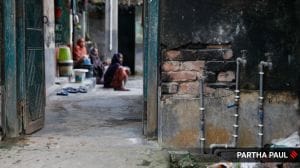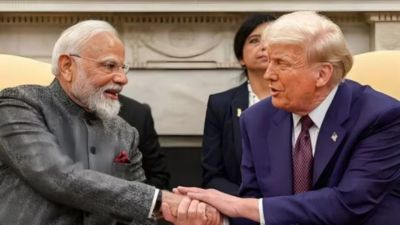With India aiming to become “the most attractive medical tourism destination in the world”, Prime Minister Narendra Modi Monday said that the infrastructure and human resources being developed in the country will not be limited to the countrymen. During the post-Budget webinar on health and medical research, Modi said medical tourism is emerging as a huge sector and a major medium of employment generation.
With 157 new nursing colleges – co-located with the new medical colleges started since 2014 – being announced during Budget 2023-24, the Prime Minister said, “Opening of 157 new nursing colleges near medical colleges is a big step for medical human resources. It can be useful not only for India but also in meeting the demand of the world.”

The PM also spoke about the need for India to become self-reliant when it comes to the healthcare sector, having experienced the pandemic when medicines, vaccines and medical devices became weapons for some countries.
The need in numbers
Story continues below this ad
India has 9.82 lakh registered auxiliary nurse midwives and 24.7 lakh registered nurses and registered midwives as on December 2022, totalling 34.57 nursing professionals as per data presented in Parliament.
Although there has been some increase in the numbers over the previous years, the number of nursing professionals in the government’s primary healthcare facilities – primary health centres and community health centres – has been on the decline over the years.
The number of auxiliary nurse midwives at these centres has reduced from 21.3 lakh in 2014 to 20.76 lakh in 2022, according to data in the recent economic survey. Although there has been a net increase in the number of other nursing staff at the Primary Health Centres (PHCs) and Community Health Centres (CHCs) since 2014, the numbers have declined over the last three years. The number of nursing staff in PHCs and CHCs increased from 63.9 thousand in 2014 to 81 thousand in 2019. It will be reduced to 79.9 thousand in 2022, according to the economic survey.
As per a 2020 report by the World Health Organisation, countries in South East Asia need 1.9 million more nurses and midwives to achieve health for all by 2030. It says over 65 per cent of the WHO member countries had fewer than 50 nurses and midwives per 10,000 population.
Story continues below this ad
When it comes to nursing training, there are 1,892 institutions for ANM training with 55,490 seats and 6,894 institutions with 2.72 lakh nursing seats in the country at present, according to the National Health Profile 2021.
Why new colleges are needed
First, there is a need for more nurses to provide quality medical services at the new medical colleges. Co-location is the key, said president of the Indian Nursing Council T Dileep Kumar. “The co-location of these nursing colleges is the key. This will help in effectively utilising the infrastructure of the medical colleges. It will improve the quality of care. It is a very good step.”
Dr A V Raman, former director of nursing education and research at Westfort College of Nursing in Thrissur said that when such co-located nursing colleges don’t exist, the nurses-in-training working at the hospitals have to get affiliated to other colleges that might be far off.
Second, an increase in need for tertiary care. Dr Suresh Kumar, medical director of Lok Nayak hospital in Delhi, said that there has been a sharp increase in the need for nursing professionals after the pandemic. “Along with our regular nurses, we have also engaged nursing professionals on contractual basis. There has been a massive increase in the need for nursing professionals after the pandemic because the number of ICU and critical care beds has gone up. And, we need one nurse for every bed round the clock in these critical areas of the hospital.”
Story continues below this ad
Other than the pandemic-driven increase, the government is also working on increasing tertiary care facilities that would require higher density of nursing professionals and hence the need for more training centres, he said. The shortage persists mainly in smaller hospitals and in small cities and villages, he said.
Third, the additional workforce can help in increasing manpower for the government’s push towards well equipped primary health centres. Dileep said, “The government has been focusing on nursing. Another good step was creating the post of community health officers. There is a bridge course for nurses that can help in effectively utilising the nursing resources of the country in rural areas.”
In fact, most of the work at these centres can be handled by nursing professionals, said Dr Raman. She added, “I was trained in Obstetrics and 95 per cent of all the work in the department can be handled by a nursing professional. Doctors are needed only for handling the 5 per cent complicated cases. Similarly, most of the work at PHCs can be done by nurses as they are also empowered to prescribe certain medicines. The doctors can be contacted only for critical cases. This is cost-effective.”
Need for better salaries
Just creating the new seats, however, will not help in retaining the nurses in India without good pay, said Dr P K Bharadwaj, secretary of the Delhi Voluntary Health Forum and advisor to the Association of Healthcare Providers of India. He is also the administrator at Saroj hospital in Delhi. Dr Raman agreed that the migration of Indian nurses to other countries has increased because of better pay, resulting in a shortage in the country.
Story continues below this ad
Dr Bharadwaj explained, “We used to see nursing professionals from South Indian states who would migrate to cities like Delhi for better pay. After training at smaller clinics, then at small nursing homes and then at bigger hospitals for five to six years, they migrated to other countries. Although, the pay in the government hospitals is better – about Rs 70,000 plus accommodation – no private hospital can pay that much.”
He added, “This is because private hospitals other than the large corporate chains are mainly dependent on patients coming in through government schemes like Central Government Health Scheme, Ayushman Bharat and Delhi Arogya Kosh that pay very little. And, when it comes to insurance, the Third Party Administrators pay less to smaller hospitals further compounding the problem.”









